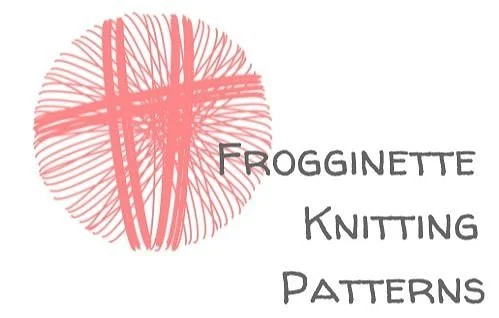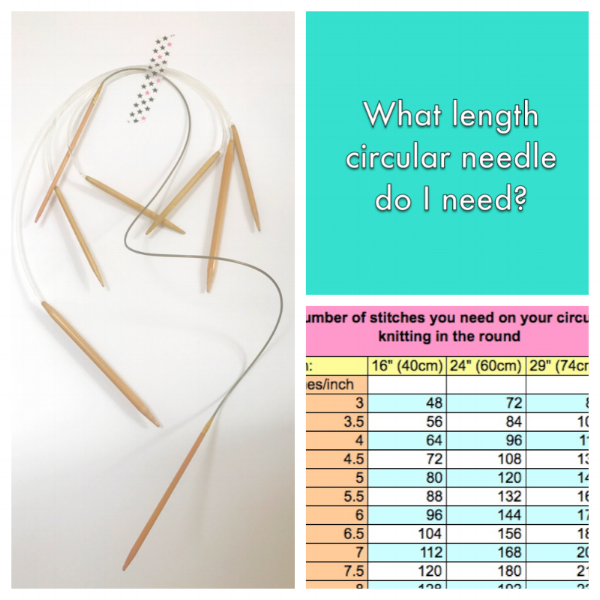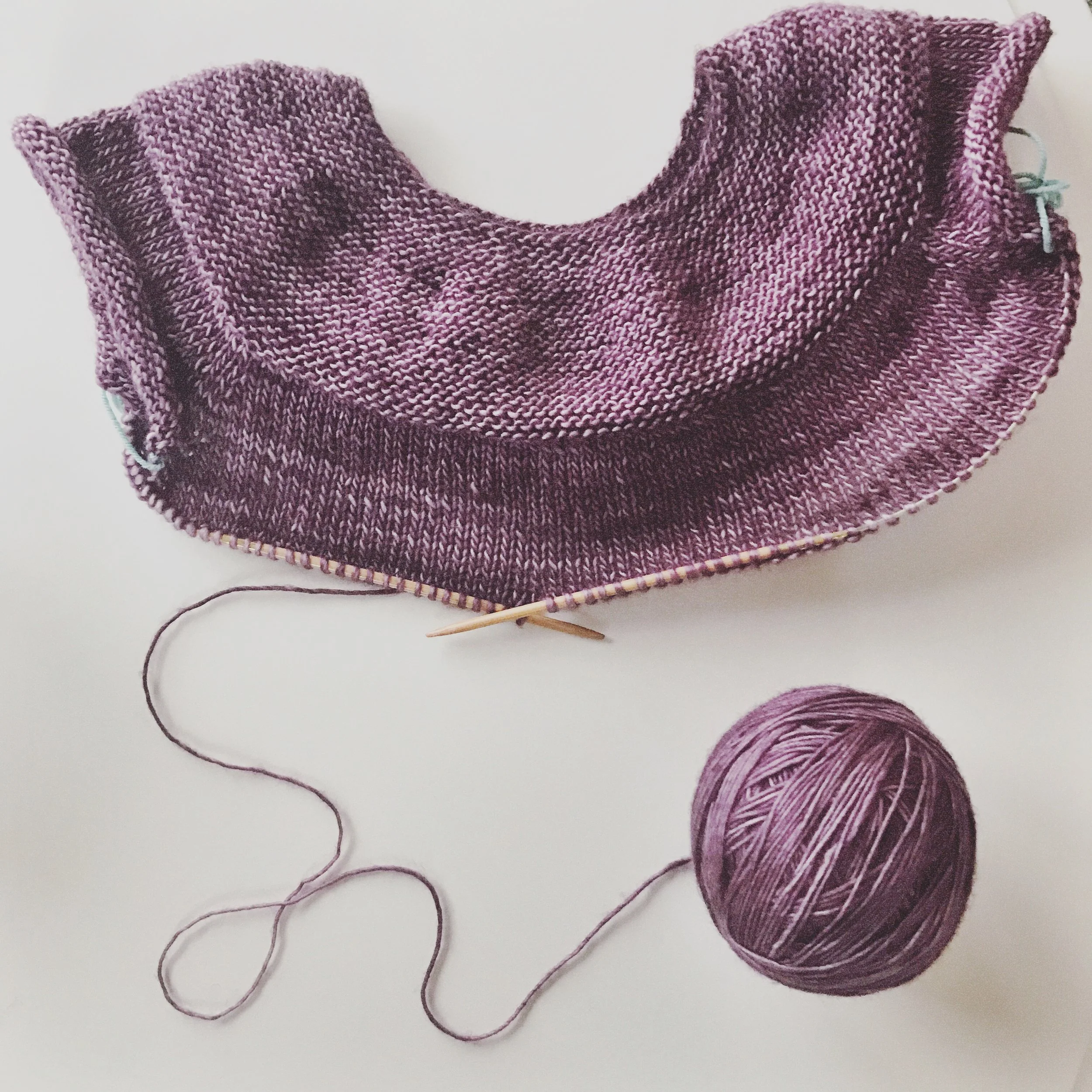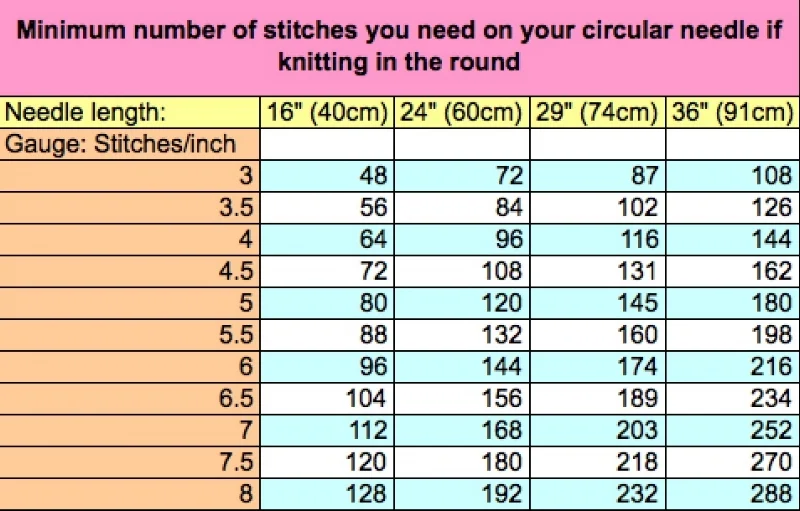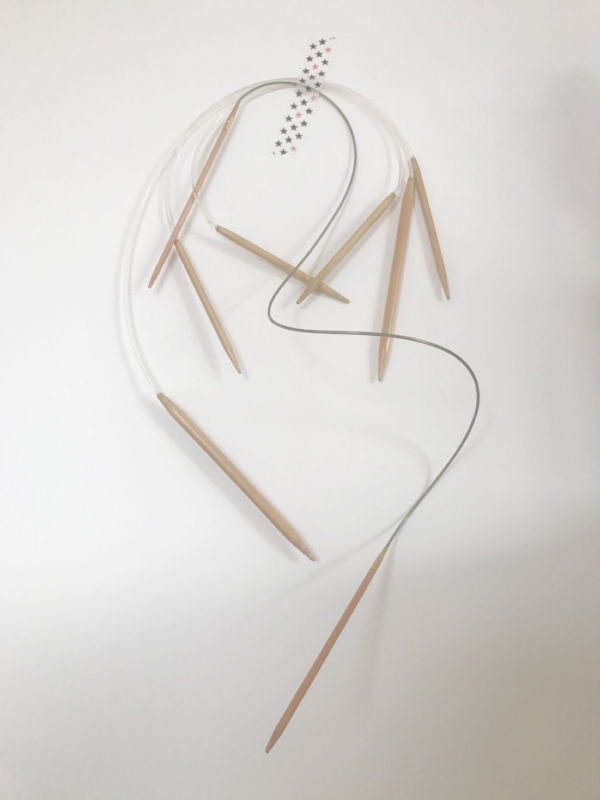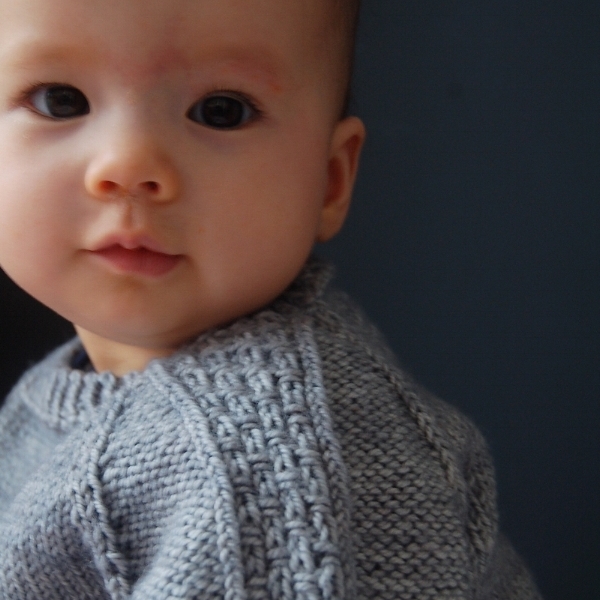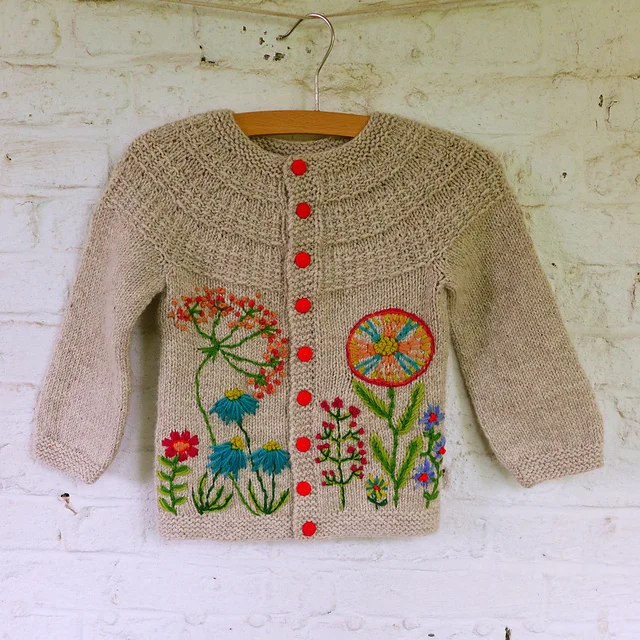I just received an email from a customer today asking me which length her circular needle should be for her project.
Usually I'll specify this in the pattern (this length is meant tip-to-tip by the way), but there are times when this info isn't included, or, you may only have a particular length circular needle at home and you want to know whether you can get away with not buying a new one ;)
Note: For the purpose of this blog post I'm leaving aside other techniques such as using the magic loop technique, double-pointed needles, or more than one circular needle.
The first thing to consider is whether the garment is knit in the round or not.
Garment is knit flat
As most of you probably know, even when a garment is knit flat (when you alternate knitting the right side and the wrong side of the fabric, also known as knitting "back and forth") you may still need to (or choose to) use circular needles, especially if the garment is seamless.
This is because you will at one point or another, end up with many stitches on your needle (for example, if the back and the two fronts of a cardigan are worked in one piece) and it could be unwieldy to use long straight needles -- though some people prefer to do this, or use double-pointed needles (it's all about personal preference.)
Another case where circular needles may be more comfortable to use when knitting flat is when you need to knit along a shape that has a curve to it, like a seamless cardigan's yoke, or the front band of a hoodie. For example, the textured band of my Latte Baby Coat is knit in one piece in a U-shape, along both fronts and the edges of the hood. Since it's difficult to knit along an angle with straight needles, the flexibility of the circular needle's cable is helpful.
In either case, you will need to figure out by quickly scanning through the pattern the maximum number of stitches that you will have on your needles for the size you are knitting and convert that to inches (divide the stitch count by your per-inch-gauge). Thankfully, most good patterns include stitch counts and this shouldn't be too difficult to locate.
In a seamless, top-down cardigan like my Hyphen cardigan, this maximum number of stitches will be right before you divide for the body and sleeves.
In a seamless, bottom-up cardigan like my Silverfox cardigan, it will be right when you start working the yoke, i.e. after you join the body and the two sleeves.
There are some exceptions: for example, my Tiered Baby Coat is constructed seamlessly and top-down, but in this case, there is a significant flare at the bottom of the garment, created by two increase rows, and the max number of stitches will be reached after those increases are completed, so you'd have to look at the length of the hem to determine your circular needle size in this case.
Once you have this max number of stitches, you can translate it into inches (by dividing it by your per-inch gauge). Let's say this number is about 30" (or 76cm). Does this mean that your standard, 24" (or 60cm) needle is too short? Well, not necessarily! A circular needle can hold 30-40% more than its length so you have some leeway. This is when it comes down to personal preference: how crammed do your stitches need be on your needles before it starts bothering you?
You start getting a feel for these things: I find that unless I'm knitting a seamless dress or flared out cardigan, a 24" circular needle will work ok for most kid's garments (at least until sizes 6yo to 8yo). After that, a longer cable, like the 36" (or 91cm) may be preferable.
- Garment is knit in the round
In this case, there is less margin for error. If you are knitting in the round, the circular needle length cannot be greater than the smallest circumference of your project.
So, if you're knitting a 3 month garment that is knit in the round, like my Tutu Top for example, a quick look at the schematic will tell you that the finished garment's chest circumference (the smallest part of the body) is 17.5" or 44cm. So, you cannot use a 24" circular needle to knit the body. You need to go down to a 16" or 40cm needle. Otherwise there simply won't be enough stitches to "populate" your too-long cable.
Here's an example in the photo below: can you see that my stitches are a little stretched out? My circular needle was a bit too long for the project but I decided to forge ahead, as I was about to start a series of increases:
For some projects, you may need to start out with a short circular needle or even double-pointed needles (for instance, if knitting a neckline in the round) and then switch over to a longer one as you work your yoke increases and your needle starts getting too crowded.
If you're knitting a hat, you are pretty much going to be fine using a 16" or 40cm circular needle to work the brim (unless you knit a tiny size in which case you may need something even smaller -- again look at the finished project circumference) but will likely need to switch to a smaller length, or use dpns as you work through the crown decreases.
I put together this quick chart as a reference, so that you can see the minimum number of stitches that you need to be able to knit comfortably in the round on a circular needle, without stretching your stitches.
So, if the recommended gauge for your project is 4 stitches per inch, and you need to knit 80 stitches in the round, you'll be better off using the 16" circular needle. The 24" won't work well, because for that length, you need at least 96 stitches.
Here's an overview of the most common circular needle lengths that are out there and what they may be typically used for:
- 8" (20cm) to 12" (or 30cm): These are a bit unusual, (using dpns or the magic loop method is more standard) but they can be used to knit narrow tubes in the round: baby hats, socks, sleeves, mittens etc...
- 16″ (40cm): These are mostly used to knit the brim portion of hats or the body of baby sweaters that are knit in the round.
- 24" (60cm): This is probably the most versatile length, especially when it comes to knitting flat or knitting children and smaller women’s sweater bodies.
- 29" (74cm): Same as above except that it gives you a bit more room. Also good for baby blankets.
- 36″ (91cm): Generally used for flat-knitting, it's a common size used for adult cardigans as well as shawls or blankets.
- Longer length circular needles are usually used for large shawls and blankets, in particular the ones that are knit in the round.
So there you have it! I hope this info will prove useful to you. I have to confess that I'm a bit of a "knitting McGyver" myself, always trying to make do with what I have -- sometimes beyond what is reasonnable ;) What can I say? I can never seem to locate the circular needle length I need when I need it!
